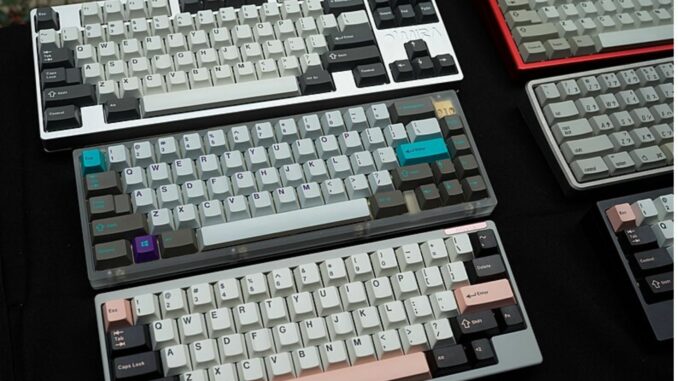
The computer keyboard market nowadays has a lot more variety than one might expect, but the most important aspect of a keyboard is how the keys work. Mechanical and membrane switches are the two most common types, so here’s how they differ and why you should care.
Mechanical boards have small pins that are pushed down by the switch’s mechanism, whereas membrane keyboards use electrical contact between the membrane layers (that rubber-like sheet section) and the PCB. When you press a key, the input is sent to your computer via the PCB, either via a USB cord or wireless connection.
Other variants of both exist, such as gaming mechanical keyboards with light beams instead of pins and rubber dome switches that are very similar to membrane switches. The older buckling spring-loaded switches, which combine membrane and mechanical switches, are also available. Basically, the distinction isn’t set in stone, but it’s clear enough that if a keyboard specifies “mechanical” or “membrane,” you can assume it uses one of the two methods I mentioned in the first paragraph.
There are also membrane-based scissor switches that use a minimal amount of hardware to improve tactility. These are commonly found on laptops and other thin-style keyboards, and typists all over the world love them.
Which should you choose?
In the end, the decision between the membrane and mechanical keyboards should be based on your needs. A mechanical board is a way to go if you spend a lot of time typing or want something that’s great for gaming. Mechanical keyboards have fantastic feedback, and if you can put up with the noise (and the higher price), you’ll have a much smoother typing and/or gaming experience thanks to full key rollover support. The SteelSeries Apex Pro is our favorite mechanical keyboard because it has a great design, provides excellent typing and gaming experiences, and has a cool wrist rest and RGB lighting to boot.
A membrane keyboard is a way to go if you’re on a tight budget or only plan on typing once in a while. They’re less expensive while still providing a good typing experience, though the lack of key rollover makes them unsuitable for typing quickly or playing games. The Razer Cynosa Chroma is one of our favorite membrane keyboards, with a solid design, cool lights, and a 10-key rollover that is limited compared to mechanical keyboards but still useful.
What is a Switch?
Each key on your keyboard has a switch underneath it. While the top plastic key is what you interact with, it’s just a cover for the switch, which is what actually registers your input, and the different methods of doing so are what give the names “membrane” and “mechanical” their meanings.
Mechanical and membrane switches both have the same basic function: they tell the keyboard’s circuit board (commonly referred to as a PCB) which key you’re pressing. Aside from that, membrane and mechanical switches can be thought of as digital and analog systems, respectively.
Key Differences between the two
The more common of the two is the membrane keyboard. A thin membrane presses on a circuit layer in a membrane keyboard, which registers the key pressed. They are more portable, less expensive, and quieter than their mechanical counterparts.
Membrane keyboards have several disadvantages, including a “mushy” key feel, a shorter lifespan, and increased cleaning difficulty. Finally, there is no way to allow “key rollover.” When using a membrane keyboard, you can only register one keystroke at a time. As a result, there may be times when the key you press does not register. This can be a significant disadvantage whether you’re gaming or typing.
The distinct key-feel of mechanical keyboards is notable. Mechanical keyboards give the user much more direct feedback. A mechanical keyboard uses spring-loaded switches instead of membrane keycaps, which press down on a thin membrane layer to a conductive circuit underneath. These register the pressed key – often with a distinct click, which is only found on mechanical keyboards. Their use of spring-loaded switches, which come in a variety of textures, is a standout feature.
Linear switches have a smooth keystroke; tactile switches have a bump in the middle of travel that provides feedback, and clicky switches have crisp aural feedback. The speedy switch, which actuates the key as quickly as possible, and the silent switch, which produces minimal aural feedback, are two lesser-known switch types. Low-profile switches are also available, allowing for a slimmer keyboard and shorter key travel.
There have been some recent advancements in key technology. Using a light beam below the switch stem, Razer has created optical switches with extremely short actuation times. SteelSeries response is the OmniPoint switch, which can be programmed to actuate at various points.
Reference
- Membrane vs. Mechanical Keyboards: What’s the Difference? – Review Geek
- Membrane keyboards vs. mechanical: What’s the difference? | Windows Central
- The Ultimate Keyboard Showdown: Mechanical vs. Membrane Keyboards | Computer Lounge
- Membrane Keyboard vs Mechanical Keyboard: Which One You Should Use? (prohavit.com)
